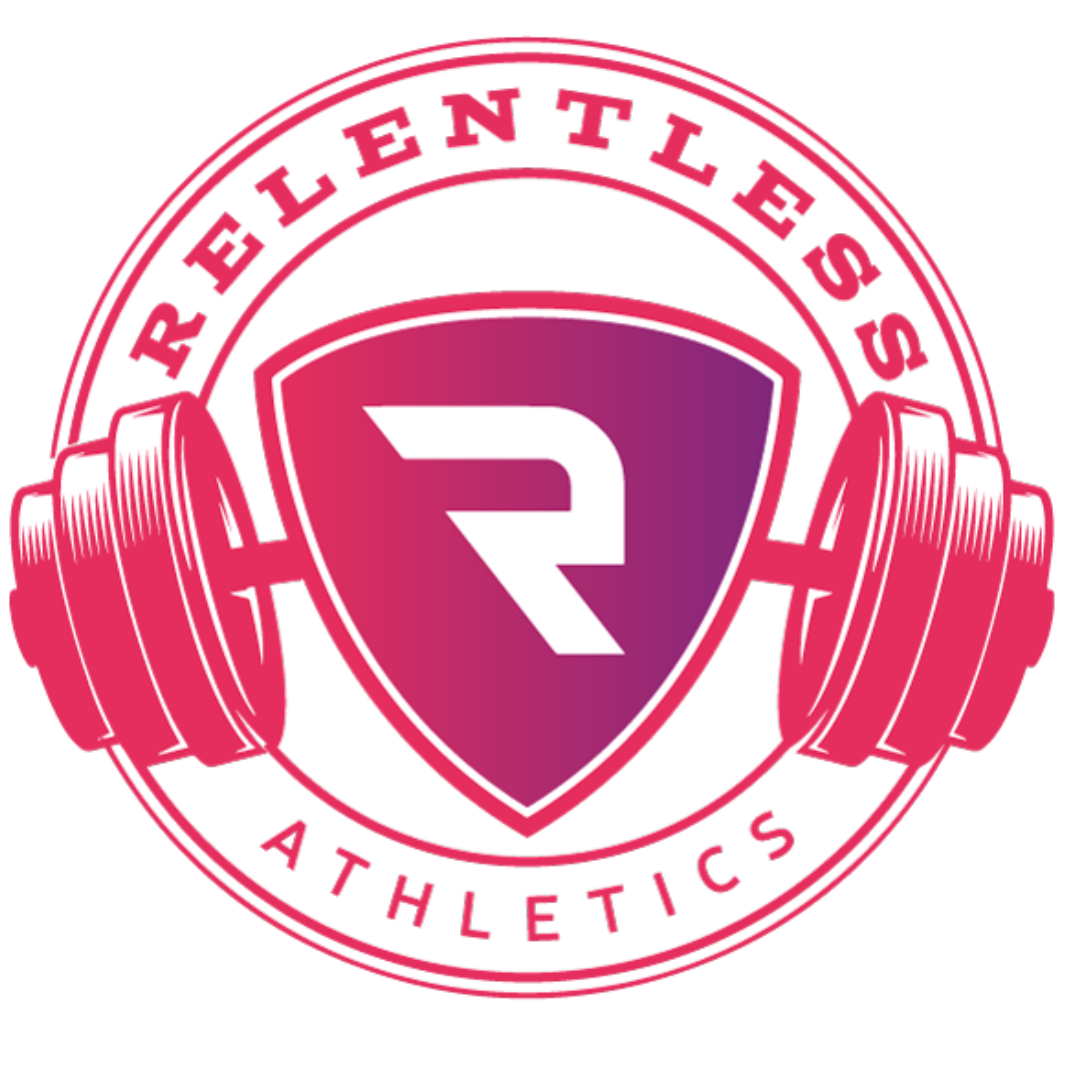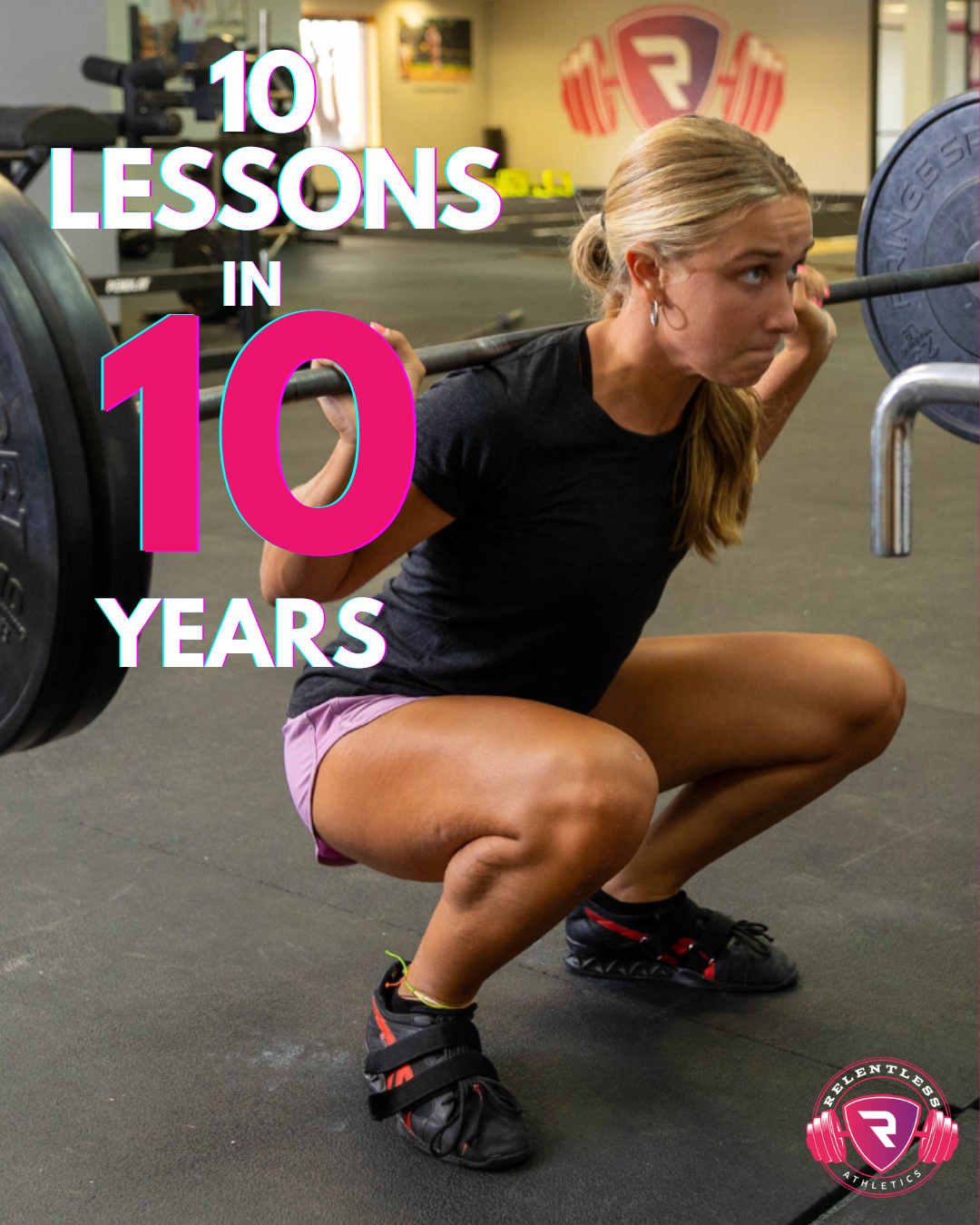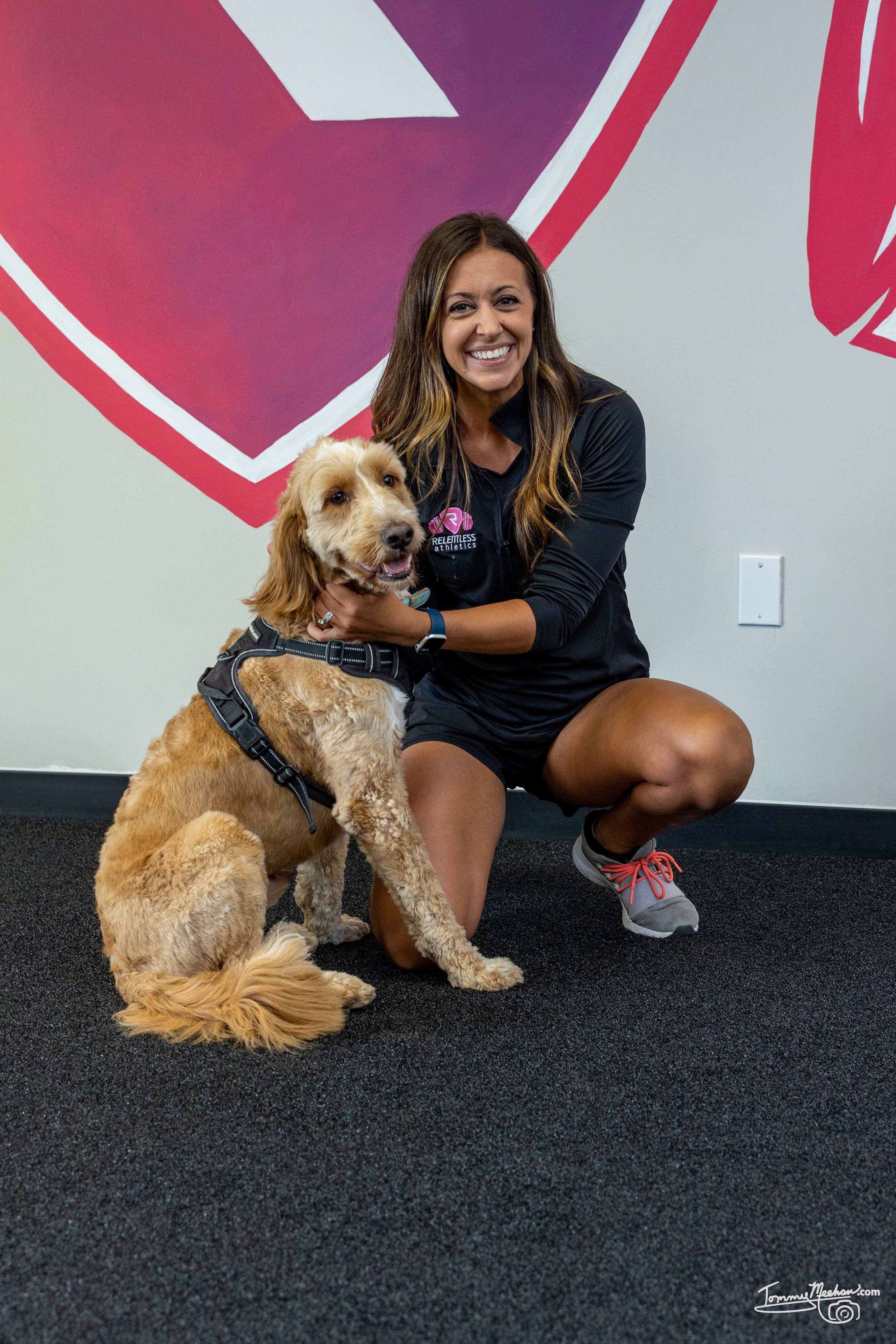10 Lessons in 10 Years: What We’ve Learned Training Female Athletes at Relentless
By Emily Neff (Pappas), Ph.D.
Ten years ago, Relentless opened its doors with a vision: to give female athletes the training, confidence, and community they deserved but rarely received. We didn’t just want to build stronger bodies — we wanted to build stronger girls.
Since then, we’ve worked with hundreds of athletes across softball, volleyball, soccer, lacrosse, field hockey, basketball, and beyond. We’ve watched them grow from timid middle schoolers into confident college athletes — and now retired athletes turned leaders in their chosen fields.
Along the way, we’ve learned more than we could have imagined. Here are the 10 biggest lessons we’ve taken from a decade of training female athletes.
1. Saying “No” Can Be the Strongest Play
We’ve seen the consequences of overscheduling — tournaments every weekend, multiple club teams, “extra” clinics stacked on top of practices.
The result? Burnout, exhaustion, and injuries that didn’t need to happen.
The athletes and parents who had the courage to say “no” often gained the most in the long run: fewer injuries, more joy, and better overall development.
👉 Read: The Power of Saying “No”
2. Strength Isn’t Optional — It’s Essential
If there’s one truth that has carried through all ten years, it’s this: strength training isn’t a bonus for female athletes — it’s the foundation.
Girls who consistently strength train jump higher, run faster, and experience fewer injuries.
We’ve seen hesitant athletes transform into powerful leaders, not because they had more skill at practice, but because they built their bodies to handle the demands of their sport.
👉 Read: Why Female Athletes Must Strength Train During the Season
3. Nutrition Is Performance Fuel
One of the biggest mistakes we see? Girls under-fueling.
Many athletes drag through practices and games not because they lack talent, but because they don’t have the energy reserves.
When athletes learn to fuel properly — with balanced meals, recovery snacks, and hydration — everything changes. Energy, confidence, and performance all improve.
👉 Read: Three Signs Your Daughter Is Not Fueling Properly After Her Game
4. Injuries Whisper Before They Scream
The “small” aches and pains are rarely small.
A tight hamstring, nagging knee, or sore lower back almost always points to a bigger issue
— usually underprepared muscles, poor recovery, or overtraining in sports.
Girls who learn to address those whispers early (with smart training and recovery) avoid the devastating injuries that can sideline them for months.
5. Girls Aren’t Small Boys — Training Must Reflect That
We’ve learned firsthand that copy-pasting training programs from male athletes doesn’t work.
Female physiology, growth, and biomechanics demand a tailored approach.
That means building force absorption, Type II muscle fibers, and resilience — things many programs overlook but female athletes desperately need.
👉 Read: Female Athletes Need to Train Differently: Its Biological.
6. Recovery Is a Skill
Some athletes think “more” is always better.
But after ten years, we’ve seen that recovery is where growth actually happens.
Sleep, nutrition, hydration, mobility — the basics create consistency and longevity.
Those who learned recovery as a skill, not an afterthought, consistently performed better and avoided plateaus.
👉 Read: The Most Effective Recovery Modalities for Female Athletes
7. Confidence Is Trained, Too
Confidence isn’t something athletes either have or don’t — it’s something they build.
We’ve watched countless girls transform from hesitant to fearless as they mastered new lifts, hit new PRs, and learned what their bodies were capable of.
The weight room became a proving ground — and those lessons carried into the classroom, relationships, and life.
👉 Read: Mental Toughness and Female Athletes
8. Parents Are Partners
Our best success stories came when parents weren’t just bystanders but active partners.
When families learned about proper fueling, training frequency, and recovery, they became advocates for their daughters — not just chauffeurs to practice
👉 Read: Strong Girls Don’t Skip Snacks
9. Science Over Fads
Trends come and go — from resistance bands to gimmicky workouts.
What has stayed true for us is sticking to the science: biomechanics, progressive overload, and evidence-based nutrition.
The science always wins.
👉 Read: Why Strength Training is Essential for Female Athletes Playing Year- Round Sports
10. The Next Decade Will Be Even Better
Ten years taught us humility, resilience, and growth.
But more importantly, it showed us what’s possible.
The next decade is about deepening our mission, educating even more families, and ensuring that strong, confident female athletes are no longer the exception — they’re the standard
THANK YOU.
To every athlete who’s walked through our doors, to every parent who trusted us, and to every alum who still carries Relentless lessons into life: thank you.
Here’s to 10 years of building stronger girls — and to the next 10, where we’ll continue to push, learn, and grow together.
ABOUT THE AUTHOR
Emily is the Owner and Program Director at Relentless.
Emily holds a Ph.D. in Kinesiology with a research focus on female athletes & the relationship between Olympic Weightlifting, performance, and ACL injury rates in adolescent female athletes. She holds an M.S. in Exercise Physiology from Temple University and a B.S. in Biological Sciences from Drexel University.
Through this education, Emily values her ability to coach athletes and develop strength coaches, using a perspective grounded in biochemistry and human physiology.
In 2015, Emily opened Relentless Athletics to create a community for female athletes, while educating their parents and coaches on the importance of strength training and sports nutrition in optimizing sports performance and reducing injury risks in the female athlete population.
When she isn’t on the coaching floor or doing work behind the scenes, she is at home with her husband, two kids, and of course, their dog Milo!












